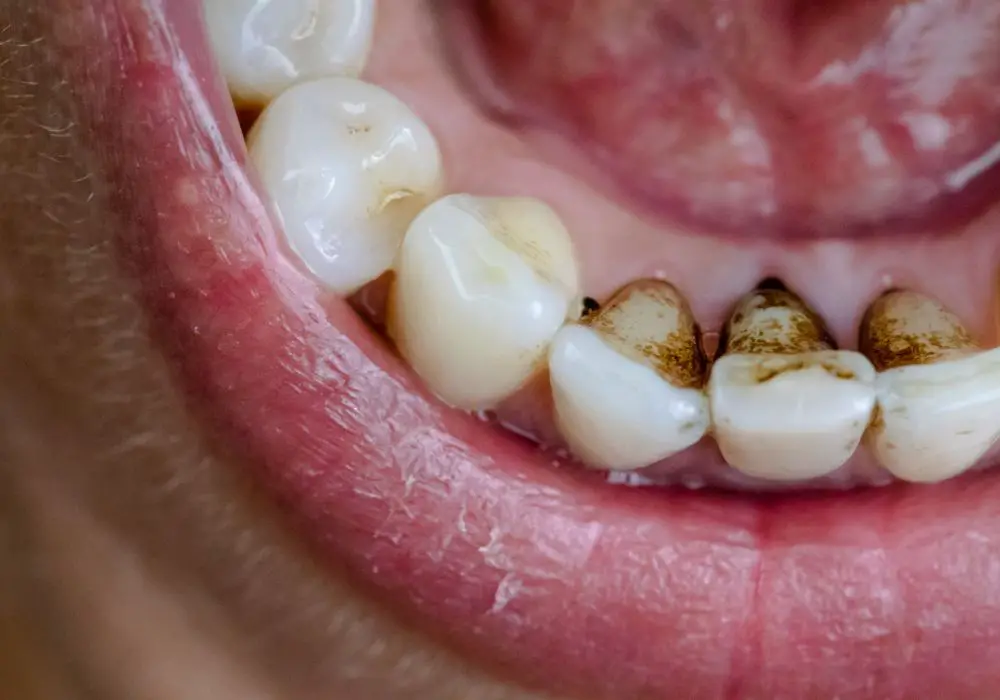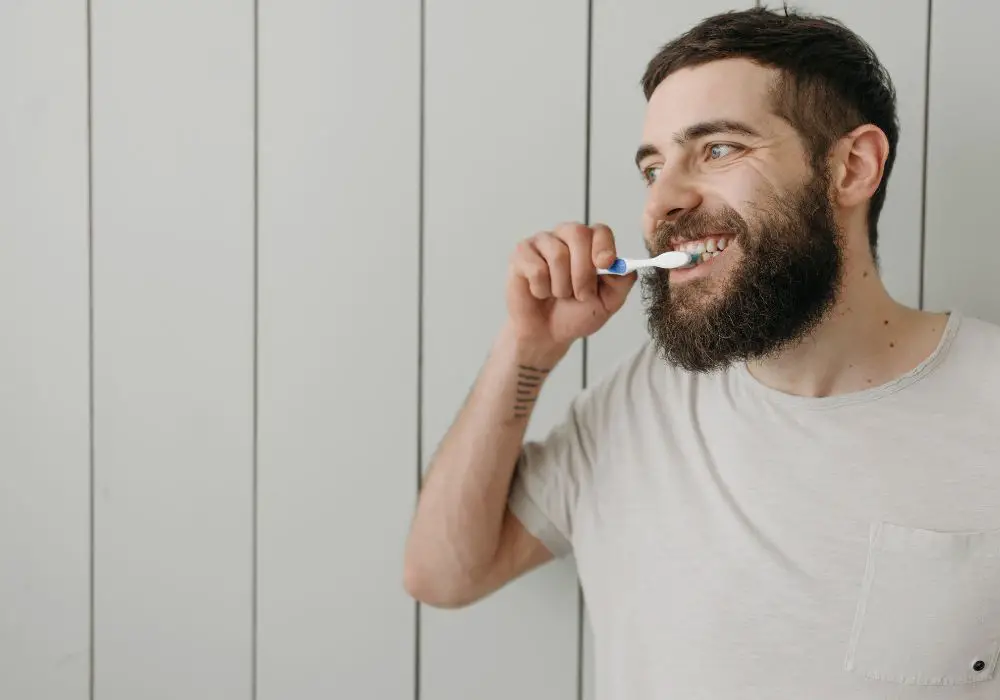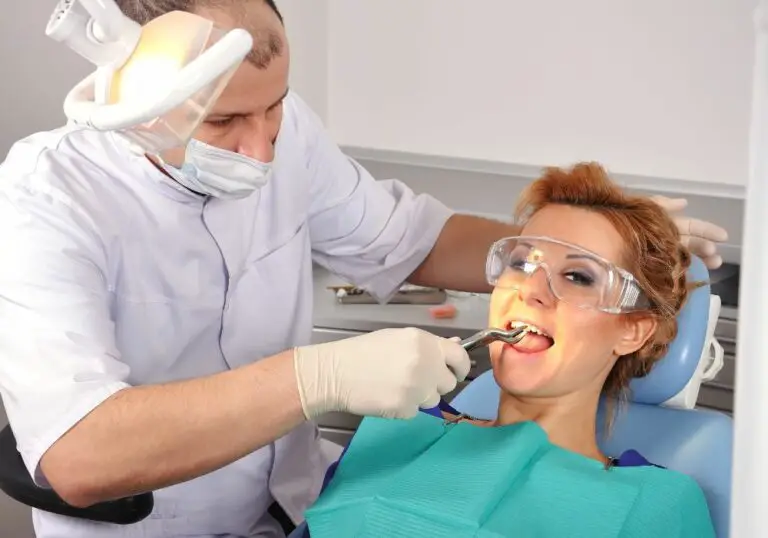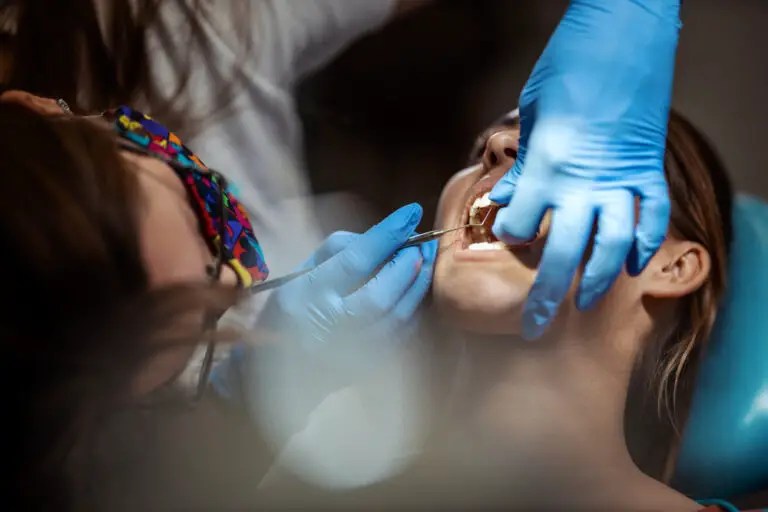Having rough or uneven teeth can be bothersome and make you self-conscious about your smile. Thankfully, there are several methods you can use to help smooth and polish your teeth at home. With some simple lifestyle changes and over-the-counter products, you can get your teeth looking naturally smooth.
What causes rough teeth?

There are a few potential causes of rough tooth surfaces:
Enamel loss
The enamel is the outer protective layer of the tooth. If the enamel wears away or thins over time, it exposes the softer and more porous layer underneath called dentin. This can give teeth a rough texture. Enamel loss can occur from:
- Acid erosion from frequent acidic drinks like citrus juices, wine, or soda
- Grinding or clenching teeth at night (bruxism)
- Tooth decay
- Improper brushing with too much pressure over time
Stained teeth
Dark stains on your teeth from foods, drinks, or smoking can make teeth feel rough. The porous stains get trapped in grooves, pits, and other uneven areas on your teeth.
Built-up tartar and plaque
Plaque is a sticky film of bacteria that builds up on teeth if not removed properly each day. Over time, plaque hardens into tartar or calculus along and under the gumline. This can create a bumpy, irregular tooth surface.
Simple ways to smooth rough teeth at home
1. Brush teeth properly
Gentle brushing twice per day with a soft-bristled toothbrush is key for polishing away stains and plaque buildup. Here are some tips:
- Use a toothpaste for stain removal and enamel strengthening
- Brush teeth in a circular motion along the gumline and on the chewing surfaces
- Don’t scrub vigorously, which can damage enamel
- Brush your tongue to freshen breath
- Floss once per day to remove plaque between teeth
2. Rinse with mouthwash
Mouthwashes containing ingredients like hydrogen peroxide can help breakdown stains and smooth tooth surfaces. Swish the mouthwash around for the full duration recommended on the label, usually 30 seconds to 1 minute.
3. Drink plenty of water
Staying hydrated with water throughout the day helps neutralize acids from food and drinks that can erode enamel. Aim to drink at least 8 glasses of plain water per day.
4. Limit stain-causing foods and drinks
Cutting back on certain foods and beverages can prevent new stains from forming and worsening tooth texture. Avoid or reduce intake of:
- Coffee, tea, red wine, and soda
- Dark berries, tomato sauce, and other deeply pigmented foods
- Tobacco products
5. Use teeth whitening products
Over-the-counter teeth whitening kits contain peroxide-based gels that help safely bleach away stains and even out tooth surfaces. Options include:
- Whitening strips
- Whitening pens
- Whitening trays with gel
- Toothpastes with baking soda or hydrogen peroxide
Follow the product instructions carefully. Results are usually seen within 1-2 weeks of consistent use.
When to see a dentist

While the methods above can improve mild cases of rough teeth, it’s best to see a dentist if:
- You have severe tooth sensitivity, pain, or receding gums
- Stains are concentrated in one area of the mouth
- Teeth are extremely sensitive to hot/cold foods and drinks
- You notice cracks, chips, or other dental injuries
The dentist can diagnose the cause of roughness and provide professional treatments like:
- Cleanings to remove hardened tartar
- Enamel shaping to smooth pits and grooves
- Filling cavities from decay
- Dental sealants and bonding for cracked teeth
- Prescription strength fluoride or whitening treatments
Professional teeth whitening at the dentist
For more dramatic whitening and smoothing results, you can get professional teeth whitening done at your dentist’s office. This is ideal if you have deep-set stains or want whiter teeth as quickly as possible. Common in-office treatments include:
Laser teeth whitening
A concentrated peroxide-based bleaching gel is applied to the teeth before using a special laser light to accelerate the whitening process. This takes about an hour and effects last 1-3 years.
Zoom! In-office whitening
Your dentist applies a high-concentration hydrogen peroxide gel to your teeth and uses a Zoom! LED light to activate the whitening ingredients. Treatments take about an hour and teeth can be up to eight shades whiter.
Opalescence Boost
This is a chemically activated 15% hydrogen peroxide gel your dentist applies to your teeth for 15-20 minutes intervals. You may require 1-3 sessions for optimal whitening.
Professional whitening can cost anywhere from $200-$600 but provides longer lasting, highly effective results. Be sure to discuss the options with your dentist.
Lifestyle and diet tips for smoother teeth

Making some simple lifestyle tweaks can keep your teeth naturally smooth between professional cleanings and whitening sessions. Try these tips:
- Drink water after consuming acidic foods or beverages
- Avoid tooth-staining foods right before bedtime
- Chew sugar-free gum to increase saliva flow
- Use a straw to drink staining beverages
- Brush after meals or at least rinse thoroughly with water
- Get dental cleanings every 6 months
- Use enamel-strengthening toothpaste daily
- Monitor products containing abrasives like charcoal
- Don’t brush right after vomiting, wait 30 minutes
When are porcelain veneers an option?
Porcelain dental veneers are thin shells made of tooth-colored material that bond to the front surface of teeth. They can:
- Correct chips, cracks, gaps, and discoloration
- Improve the shape and symmetry of teeth
- Create a bright, perfectly smooth smile
Veneers last 10-15 years with proper care. They are an option if you have:
- Severely worn, fractured, or discolored teeth
- Crooked, uneven teeth that are resistant to orthodontics
- Spaces between the teeth
- Permanently stained teeth unresponsive to whitening
The dentist will shave down the front of the tooth around .5mm before adhering the custom-made veneer shell. Total treatment time is 2-3 visits. Keep in mind that some natural tooth enamel will be removed permanently.
Porcelain veneers cost approximately $925-$2,500 per tooth. Check with your dental insurance on coverage. Veneers are a significant, long-term investment to dramatically improve your smile.
Common questions about rough teeth
1. Why are my teeth rough even though I brush daily?
Some common reasons teeth appear rough despite regular brushing:
- Brushing too aggressively over time, wearing down enamel
- Consuming frequent acidic or staining foods and drinks
- Grinding teeth at night due to stress or sleep issues
- Built-up tartar and plaque not removed fully each day
- Early stage tooth decay or cavities
Use a soft-bristled brush and be gentle when brushing. See your dentist if problems persist.
2. Can teeth be too rough to whiten?
If enamel is severely eroded, at-home whitening kits may not work well or produce discomfort. The rough, porous tooth surface allows the whitening gel to penetrate deeply into the dentin. This can increase sensitivity. See your dentist to assess if professional whitening is still an option.
3. How can I tell if tooth roughness is from cavities or enamel loss?
It can be difficult to determine the cause of tooth roughness from appearance alone. Cavities often appear as white, brown, or black spots on teeth. Enamel loss leads to a yellowish, transparent look. Evaluate any temperature or pressure sensitivity as well. Make an appointment with your dentist for an exam to diagnose the cause.
4. Can chewing ice or hard foods make my teeth rough?
Yes, chewing very hard foods like ice, raw vegetables, nuts, and hard candies can chip enamel over time. The occasional ice cube won’t cause damage but it’s best to avoid habits like chewing ice. Hard foods can also crack dental work like fillings, veneers or crowns.
5. Is teeth grinding necessarily causing my rough tooth surfaces?
Grinding and clenching (bruxism) often leads to uneven, sensitive teeth over time. But other factors like acidic erosion or improper brushing can make teeth rough too. See your dentist for a full evaluation if you suspect grinding. They can fit you for a mouth guard to protect your teeth at night.
Summary
Rough tooth surfaces can result from enamel erosion, staining, plaque buildup, or grinding. Try the at-home remedies listed above like brushing properly, whitening treatments, and drinking more water. For severe cases that don’t respond to over-the-counter methods, visit your dentist to discuss professional solutions like dental cleanings, restorations, sealants, or veneers. With some effort and dental work, you can smooth your teeth and regain a bright, even smile.







